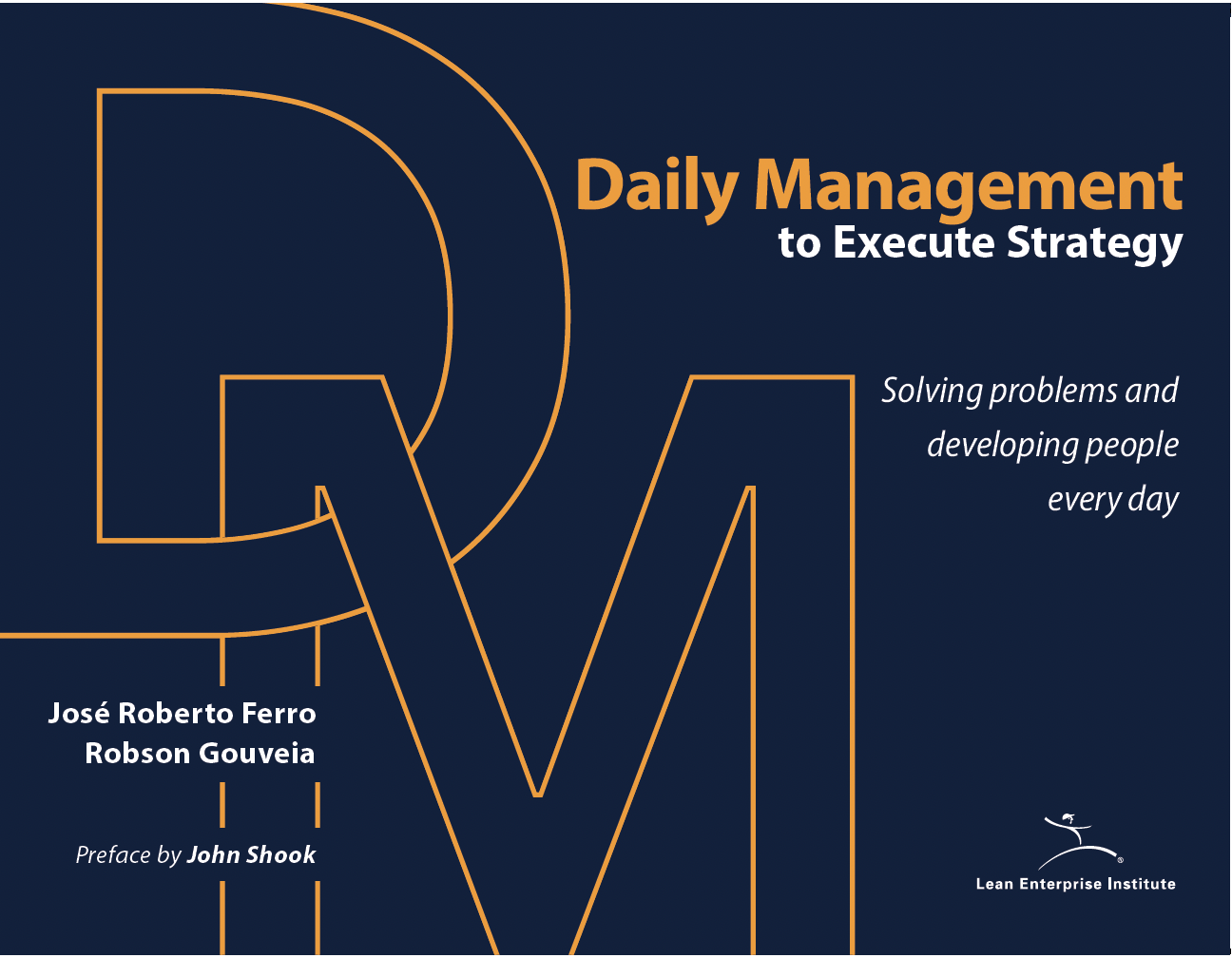Dear Gemba Coach,
Our new boss is a lean supporter and had us reduce drastically all inventories. Now we have missing parts all over the place and are late on delivering to our clients. I fail to see how this is going to make us more productive.
Oh, ouch. I’m sorry to hear that, and unless you get your new boss to listen to reason (yes, I know, how?) it probably won’t get any better. Please do not confuse inventory management with lean.
An image from the old days is that lean is like putting on a suit that is too small – it will rub at places. If you don’t do the hard work and exercise to lose weight as well, you just wear a suit that is too tight: it’s uncomfortable and unpractical.
Corporate thinks in terms of goals to achieve, best practices to acquire, and monitoring to apply. Typically, the industrial director of a site manager I know visited another company and fell in love with its “production system.” He then hired consultants to create a roadmap detailing the practices he wanted to implement, and then created an internal improvement office to implement these practices in all the sites. Practices like:
- More metrics
- Mapping the processes to locate and reduce inventories
- Daily morning meetings around boards to look at key indicators
- Corrective action plans to solve problems
- 5S
How is this ever going to help? How is this going to do anything other than further burden the sites with more bureaucratic control?
Finding Three Big Problems
One site manager looked at the problem in a different way. He agreed that he needed to improve his operations, particularly his delivery performance. He asked himself a fairly basic question: What do I deliver and what don’t I deliver?
He looked into historical reports and couldn’t find any clear pattern. He then realized that the question really should be: what I am delivering right now and what am I not delivering?
He went to logistics and tried to persuade them to visualize what was being delivered exactly as the customer ordered, and what was not – real time.
This turned out to be a fight that would last years as logistics was incredibly, vehemently you could say, resistant to visualizing clearly its outbound operations. Still, the site manager succeeded in getting his management team to look at one late delivery every day – just look into it. What they found were the usual suspects:
- Late parts – or poor quality parts – from suppliers
- Missing people at key jobs
- Unavailable equipment
- Technical problems without obvious solutions.
He decided to start with components, which seemed the most concrete problem to tackle. Moving from the one late delivery, the management team went into the shop to audit the parts situation on the late product. What it found, no surprise, is that they had too much of some stuff and not enough of what they needed on the day.
After trying to think every possible way around the issue, the management team finally persuaded itself that the only way to understand the problem more clearly was brute force checking of everything received from the suppliers – not fun.
A few weeks into doing this, it became obvious that they had three overall problems:
- The demand to suppliers was hugely variable, so suppliers sent what they had ready and would reschedule the rest, which would then arrive, but late, and not needed anymore and accumulate somewhere.
- The physical inventory was out of control with huge variances between what the computer thought it held on stock in a location and what was really in the box (huge automated inventory holding system).
- Some batches received from suppliers had a very high ratio of not-right parts, which created havoc in production.
More hard work needed. Throughout this time, while continuing to run daily operations, the management team also started to read more about lean, exchange ideas and so on, and was inspired by Toyota’s handling of suppliers. They then chose priority suppliers – that hurt them most in terms of delivery – and rather than squeeze them harder as they had in the past, decided to try to change something and work on the relationship first by:
- Being far more precise about delivery conditions – the whole logistics chain, from information to controlling truck manifests, departure and arrival times.
- Improvement activities with the supplier to check specifications and standards to make parts repeatably good.
- Review of contractual conditions to make sure there could be space for win-win.
A Miracle
The miraculous part of this incredibly messy and hands-on process is that on-time delivery crept up and inventories crept down – to the point that the huge automated warehouse was taken down.The trick was that each operational manager got involved with the supplier manager of the parts they needed, working with the purchasing manager, but no longer letting purchasing and logistics deal alone with the problem. Progress and obstacles were discussed at management meetings and solved together. Specific solutions were tried, abandoned, adjusted, adopted, etc. As they did, they changed their own ways of working to make it easier for suppliers to deliver good parts on time.
The miraculous part of this incredibly messy and hands-on process is that on-time delivery crept up and inventories crept down – to the point that the huge automated warehouse was taken down to be replaced by flat storage – a saving of several million euros of cash in inventory turns.
No debate, this is still a work in progress, and every issue solved uncovers a deeper problem, but there are nonetheless some interesting lessons to draw from this experience.
First, lean is an education system, not a production system: educating you to improve the production system (production meant in the wider sense of delivery, it works just as well for engineering or services). The lean principles and tools are there to point you towards where and what you need to improve NOT to replace your ways of working with a better functioning process. In Toyota, TPS developed in parallel with quality circle activities – you can’t separate one from the other. Quality circles are where the improvement happens, TPS shows you what you need to improve: the suit pinches, but the exercises reduce weight.
Second, individually, we need to change our minds about how we learn, moving from acquire and apply to inspire and improve. The corporate operations director’s approach of acquiring from another company a system to make his sites apply it failed – as it always does. Politically, the guy could never admit it and made a big show of it being a success, but, overall, sites are no better performing after driving the application than before. The one site that has done it differently has visibly better results in delivery, but also in productivity and use of capital (although no one at corporate seems to care). This site did it differently because the team looked for inspiration from lean techniques here and there, and used these ideas not to copy them but as a starting point to see how they could improve their local mess, and come up with their own practices.
Thirdly, what made it work was the space given to teams to solve one problem after the other and the interest the site manager continued to give to increasingly technical problem solving. No one has the right answers, but progressively they learned to recognize known mistakes and look for different ways. They also learned to delve more deeply in the theory of what they did. The biggest overall impact was a radical change of relationship with suppliers, from contractual fights to technical discussions, point by point.
The ”Best Practices” Trap
Lowering the water in the lake by reducing inventories makes sense if – and only if – you can visualize where the rock, the problem, appears. Reducing inventories, in general, is just a sure way to fail, we’ve experienced that again and again for 30 years now. Reducing inventories really starts with better managing the information/delivery relationship with suppliers to control lead-times, and then reduce them through solving technical problems (many of which are about the practicalities of logistics: containers, trucks, shipment lists, etc.)
Using your clout as a director to put pressure on any delivery system is always tempting and, if you’ve got the personality for it, rather easy. But it rarely works, because reality is sticky and non-performance reflects concrete unsolved problems.
Lean is a system to learn to see these problems and create the conditions for people to solve them real time so that they understand their job better, do it better, and come up with better ways. Using lean as an education system, your delivery will go up, your inventories will do down. Acquiring and applying “lean best practices” will make the situation you describe from bad to worse. I wish I knew how to make your boss change his or her mind, but there it is.






